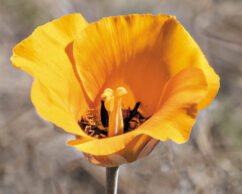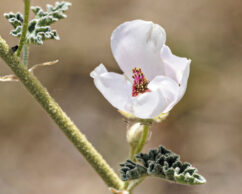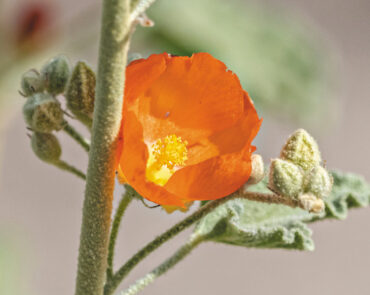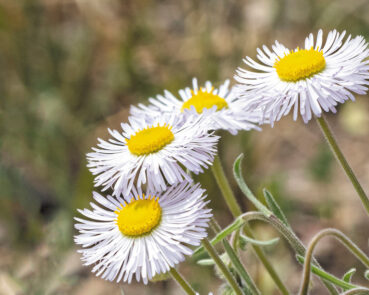Gerald Tietje
“April showers bring May flowers,” an adage I learned as a youngster growing up in Wisconsin where we waited through long winters for crocus and tulips to sprout and bloom. Not so here in Southeastern Arizona where wildflowers germinate after the onset of early winter rains like we had last December. If we have monthly rains and a mild winter without many hard freezes, we can look forward to a bountiful wildflower display in 2023. Many species begin blooming in February, with a plethora blooming in March and April. Monsoon rains take over mid-June and additional wildflowers bloom through December. This article focuses on the early bloomers.
One of the first decisions when discussing wildflowers is whether to use common names or scientific names. Common names are more familiar, but in some cases, there are several common names for the same wildflower. Scientific names, on the other hand, are unique for each wildflower species. That is why botanists use scientific names that are derived from Latin according to a system developed by the Swedish botanist Linnaeus in the 1700s. Scientific names consist of two parts, the first being the genus (group to which the species belongs) and the second an epithet (to distinguish the species). For example, the scientific name for the California Poppy is Eschscholzia californica. (You will be happy I chose to use common names for the remainder of this article!)
If it is a good year, we can expect to see quite a few wildflowers in February. In our area we see several species with interesting names: Wild Hyacinth, Goodding Verbena, Bristly Nama, and Firecracker Penstemon (also called Scarlet Bugler). There are too many species that begin to bloom in March to name, but I do have some favorites. The lemon-yellow flowers that sit atop long gray-green stems are Desert Marigolds; they are seen along the SaddleBrooke Ranch (SBR) Nature Trail, along with two species of Globe Mallow. The wine-glass-shaped blossoms of the Desert Globe Mallow have petals that are bright orange with yellow centers, and the Caliche Globe Mallow petals are light pink with maroon centers. On a short walk along the SBR entrance road last March I saw Parry Penstemon, Owl’s Clover, Fiddleneck, Spreading Fleabane, and both Globe Mallow species blooming—quite a display! My favorite wildflower that begins to bloom at this time of year is the bright orange, three-petaled Desert Mariposa Lily. Mariposa means “butterfly” in Spanish and refers to the wing-like movement these colorful petals make in a breeze. You may have to drive to Catalina State Park to see them, but it is worth the trip.
I hope I have piqued your interest to begin identifying some of the wildflowers in our area if you are not already. Of course, it helps to have a field guide like Wildflowers of Arizona by Nora and Rick Bowers or an app like PictureThis—The Plant Identifier. Being able to identify these colorful early bloomers will make your walks more enjoyable.





